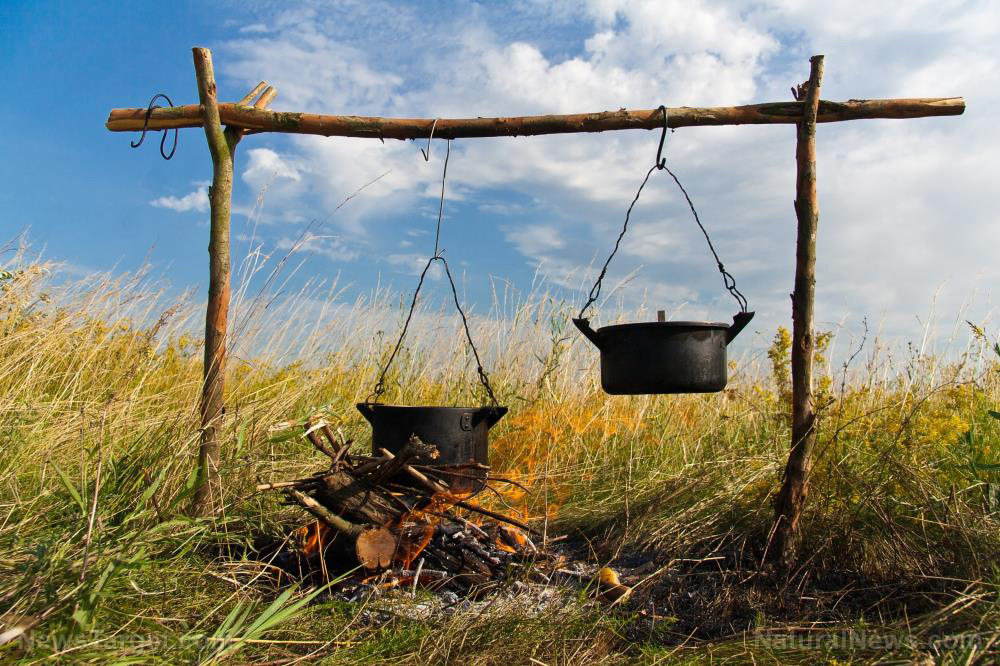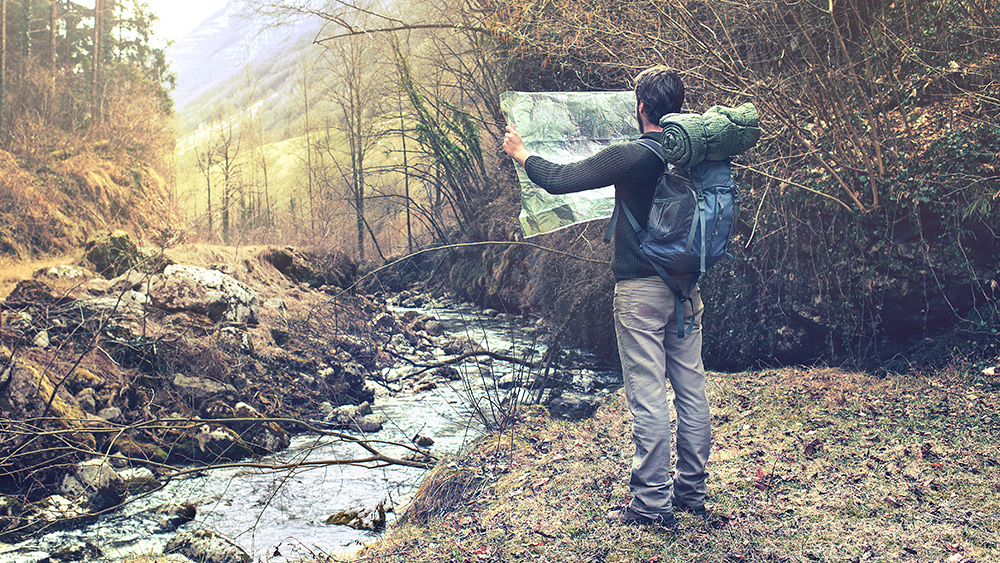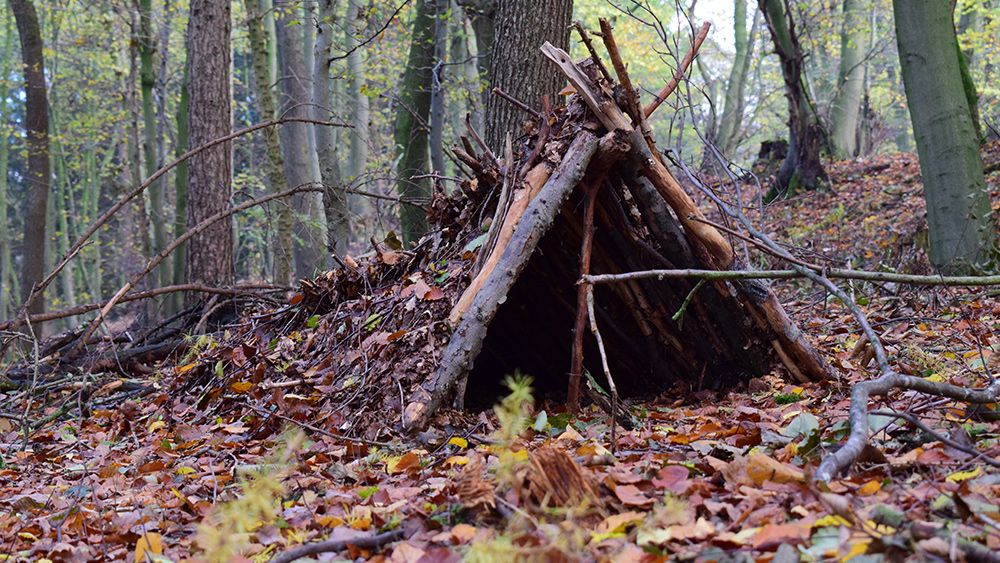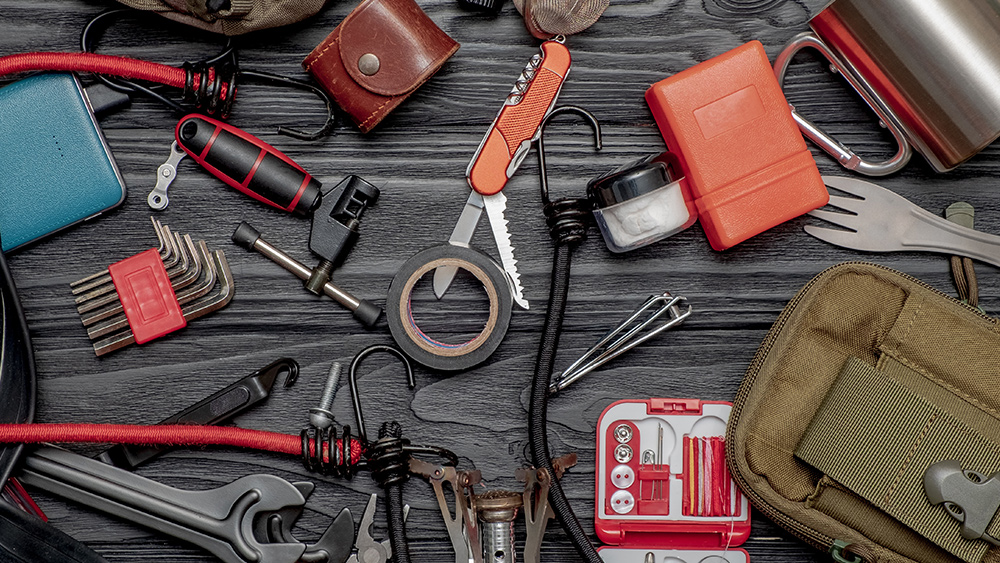
Having your own car is convenient, especially when you're in a post-SHTF world. And while smaller cars are faster, having a pickup truck means your vehicle can be used to bug out with your whole family or move a lot of supplies.
Aside from being able to tow or haul massive or heavy cargo, some pickup trucks also have some off-road capability as a trade-off for maximum mobility over any terrain. (h/t to ModernSurvivalOnline.com)
If you drive a pickup, you can turn it into a mobile store room that will meet all your prepping objectives as long as you bring the right supplies, gear and tools.
Detailed below are 15 must-have items for your vehicle's everyday carry, specifically for pickup trucks.
Emergency tool kit
All cars, especially bug-out vehicles, must have an emergency tool kit with hand tools and supplies that you need to fix common automotive breakdowns and mishaps.
Your car emergency tool kit should include items like:
- Brake fluid
- Coolant
- Duct tape
- Motor oil
- Penetrating lubricant
- Pliers
- Ratchets
- Sockets
- Spare parts like belts, bulbs and fuses
- Two-sided mallet
- Wrenches
Farm jack
A farm jack, or high-lift jack, is a long, slender, skeletonized tool that is often bolted to the hood or tailgate of dedicated off-road vehicles and lifted pickup trucks.
A farm jack can lift a load much higher than a typical floor jack or bottle jack often included in consumer vehicles. This tool is necessary for safely and effectively lifting tall pickup trucks and other vehicles that ride on high suspensions. (Related: How to prep your car before SHTF.)
Fire extinguisher
Automobile fires claim hundreds of lives and cause millions of dollars in damage annually. But with a fire extinguisher, you can stop a fire in your vehicle before it spreads.
Most vehicular fire extinguishers are rather small and should be mounted in a bracket or other kind of holder for easy access. A bracket will also hold a fire extinguisher secure in case of a crash.
First-aid kit with trauma supplies
Injuries and automobile accidents often go together so you need a first-aid kit with trauma supplies in your car at all times. Learn how to use all the items in your first aid kit so you can treat yourself if you are injured while traveling alone or if someone in the family gets hurt after SHTF.
Your first aid kit should have trauma supplies aboard such as items for treating burns, penetrating injuries, major lacerations and severe extremity hemorrhaging. These injuries are common in automobile crashes and having the right supplies can help you save someone if they are hurt very badly.
Include these items in your first aid kit:
- Adhesive bandages
- Burn cream
- Cotton swabs
- Cotton gauze pads
- CPR instructions
- Disposable resuscitation mask
- Emergency blanket
- First aid guide
- Medical gloves
- Medical tape
- Pressure bandage
- Safety pins
- Scissors
- Skin cleaning wipes
- Sting relief
- Triangular bandage
- Tweezers
- Wound closure strips
Remember that first aid supplies have a shelf life, so replace your supplies when necessary.
Front seat or seatback organizer
Keep miscellaneous items and tools organized in your truck using a front seat or seatback organizer.
These organizers come with a row of multi-purpose pouches slung on the back of either the front driver or passenger's seat. You can also use a seat top organizer that will secure to the front passenger seat so all your various items are easily accessible.
Go-bag
A go-bag is a smaller and lighter version of the bigger bug-out bag that should always be packed and ready at home.
A go-bag should include all the supplies you would need to make your way home, so make sure your it is within reach while you are on the road. Include survival necessities like shelter items, water and food.
Like with your car first aid kit, the items in your go-bag should also be checked regularly and rotated.
Jumper box
A jumper box is a battery with an attached, short pair of leads that will allow you to jumpstart your own truck or someone else's car without needing to attach jumper cables to each vehicle.
Look for a jumper box with a built-in air compressor, wide area work light and charging ports for cell phones, power banks and other mobile devices so it can be used as a full-time power hub when on the road.
Jumper cables
You will also need jump cables even if you already have a jump box to cover all your bases.
Jumper cables will do the job if your jump box is either out of power or underpowered for the task. Get quality jumper cables for your pickup truck with a heavier gauge than normal, all copper clamps and of extended length.
Maps and compass
If your car's GPS navigation system becomes useless when the networks go down, you can still navigate using a paper map and compass. Before SHTF, get a road atlas, near area and regional geographic or topographical maps and an accurate, quality field compass.
Ratchet straps
Ratcheting straps are used to secure cargo in the bed of your truck. The straps include a length of flat wedding that is routed through a levered, ratcheting assembly. These are easier and quicker to use than rope or other cordage, unless you are skilled with the application of hitches and knots.
Make sure you have ratchet straps if you plan on hauling supplies.
Road flares
If you need to pull over on the side of the road due to a malfunction or accident, especially on the side of a busy road, you and your truck may accidentally get struck by other vehicles.
You can prevent further accidents by using signaling equipment like traditional chemical road flares. Flares can be used in any environment and in all weather conditions, and their sputtering, vivid red flames are very hard to miss.
Tarps
Pack a couple of heavy-duty tarps on board before bugging out in your truck. You can use tarps to cover exposed load carried in the bed.
When SHTF, you can also use a tarp to create a shelter for yourself in the bed when parked.
Tarps can also be used to create a reflector for a fire, as a ground cover windbreak, as rain catcher and more. Get tarps with heavy-duty stitching and heavy-duty grommets so they don't tear loose from the massive forces exerted against them.
Tire repair kit
Aside from a dead battery, a flat tire can slow down your progress when SHTF. While most pickup trucks carry a full-size spare tire, sometimes you might be in a situation where you are dealing with more than one flat tire.
Most tire punctures usually go through the tread, and typically occur due to a long and slender sharp object like a screw or nail. You can sometimes fix this type of puncture in the field if your tire has useful service life remaining and you have a tire repair kit.
A tire repair kit includes tools designed to remove the object, clean up the edges of the hole and then insert and set a sticky, resinous plug that can be trimmed off near the surface of the tread. This will close and seal the hole.
Tow chain or Tow straps
If your truck gets stuck, you will need a tow chain or tow straps to get your truck pulled free. You will also need to ask another driver for help. If they have an appropriate hardpoint to connect to, you can use the tow chain to tow your truck out of whatever it's stuck in.
While both have advantages and disadvantages, tow straps are lighter, more compact and much safer to use compared to chains.
Traction boards
Use traction boards to give your truck traction if you get stuck in mud, sand or snow. Traction boards usually have an aggressive, studded texture to help tires grip them.
A pickup truck is a great bug-out vehicle for a prepper. If you already have a truck, make sure to prep an everyday carry kit with these useful items before disaster strikes.
Watch the video below to know how to build a trauma kit.
This video is from the Prepping101 channel on Brighteon.com.
More related stories:
Prepping before SHTF: 16 Items for your survival first aid kit.
Prepper projects: 5 ways to make an old car SHTF-ready.
Prepping before SHTF: How to store fuel properly.
Sources:
Please contact us for more information.





















